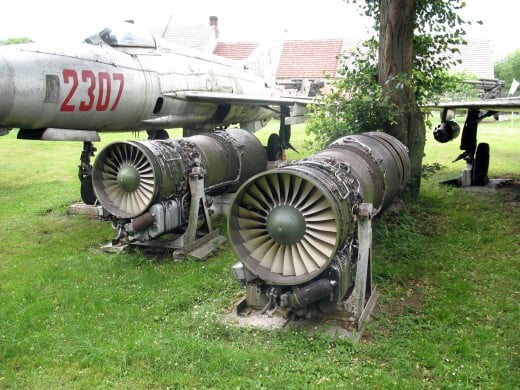What Are Afterburners In Jet Engines - Are They Different Than Turbochargers?
This is my latest research over jet aircraft technology after many months. The last hub I wrote on military aircraft was “11 most expensive fighter jet aircraft in the world”, and today I am sharing information on afterburners, turbofans, and turbochargers in jet engines. I hope you will like it.
What are afterburners?
Interestingly, afterburners are used to increase the thrust of jet engines by burning fuel after the turbine (turbojet engine) or after the core part (turbofan engine). The maximum thrust that can be obtained by the engine depends upon how much fuel you can burn in the combustor before melting down the turbine that just follows the combustor. So there is a limit to which fuel can be injected into the combustor. To increase power even beyond that, fuel is added to the hot stream of gases which still contains oxygen in it to burn the fuel. In turbofan applications, the exhaust is rich in oxygen since the bypass air forms around 80% of the total thrust. After the turbine, there is a ring of injectors which inject fuel into the incoming hot gases exhaust to produce additional thrust. Afterburners can augment the thrust to 180% of the maximum engine thrust but the fuel consumption increases up to three times with this technique. This is the reason why afterburners are not found in commercial airliners (exception Concorde Aircraft) but in military aircrafts. Afterburners are only engaged during takeoff, emergency situations (like outrunning the enemy) or while going from subsonic to supersonic regime where transonic drag is very high.

Afterburners are entirely different than turbochargers
In a cylinder of an engine, the volume is fixed so the maximum amount of fuel that can be burnt in it without choking the engine is also fixed because of the volume of oxygen inside the cylinder. So if you want to burn more fuel, you need to have more air. Turbochargers compress the air and push it into the cylinder to burn more fuel. Turbochargers derive their power from the engine exhaust. So turbochargers are nothing but air compressors that are used in engines to obtain more power from the same volume engine without a turbocharger.
Afterburners are not so efficient
Afterburners are not very efficient because of the fact that the exhaust gases have lesser percentage of oxygen than the incoming air and most importantly, the air is not compressed as done in compressor before combustion. In an afterburner, the fuel burns in open uncompressed stream of air/gases.
Turbofans do have afterburners
If you will search with keywords “Harrier jet afterburner” in google search, you will find links to two or three game sites and links to NASA and Ehow to understand about afterburner in a Harrier. A Harrier Jet is a unique design and for accommodating afterburner, you need to have variable nozzles. When the afterburner is used, the amount of gases exiting the nozzle increase and the nozzle is required to open up to increase the exit area. If a fixed nozzle is used, it will cause the compressor to stall because of rematch. Since Harrier uses 4 swiveling nozzles, this is the reason for it not having afterburners because it is difficult to make variable swiveling nozzles.
If you closely study the platypus-type exhaust of F 117 Nighthawk, you must be able to observe the fixed geometry nozzle. It is an interesting fact that F 117s don’t use afterburners because of stealth reasons. No afterburner system has been developed so far where the exhaust could be cooled. It uses a non-afterburning turbofan. Some people confuse the mixing of bypass air to the exhaust gases to cool them down. In turbofan engines, it is a common technique to increase the life of turbines and to reduce IR signatures. I hope the above information about afterburners in jet engines is helpful for you.








